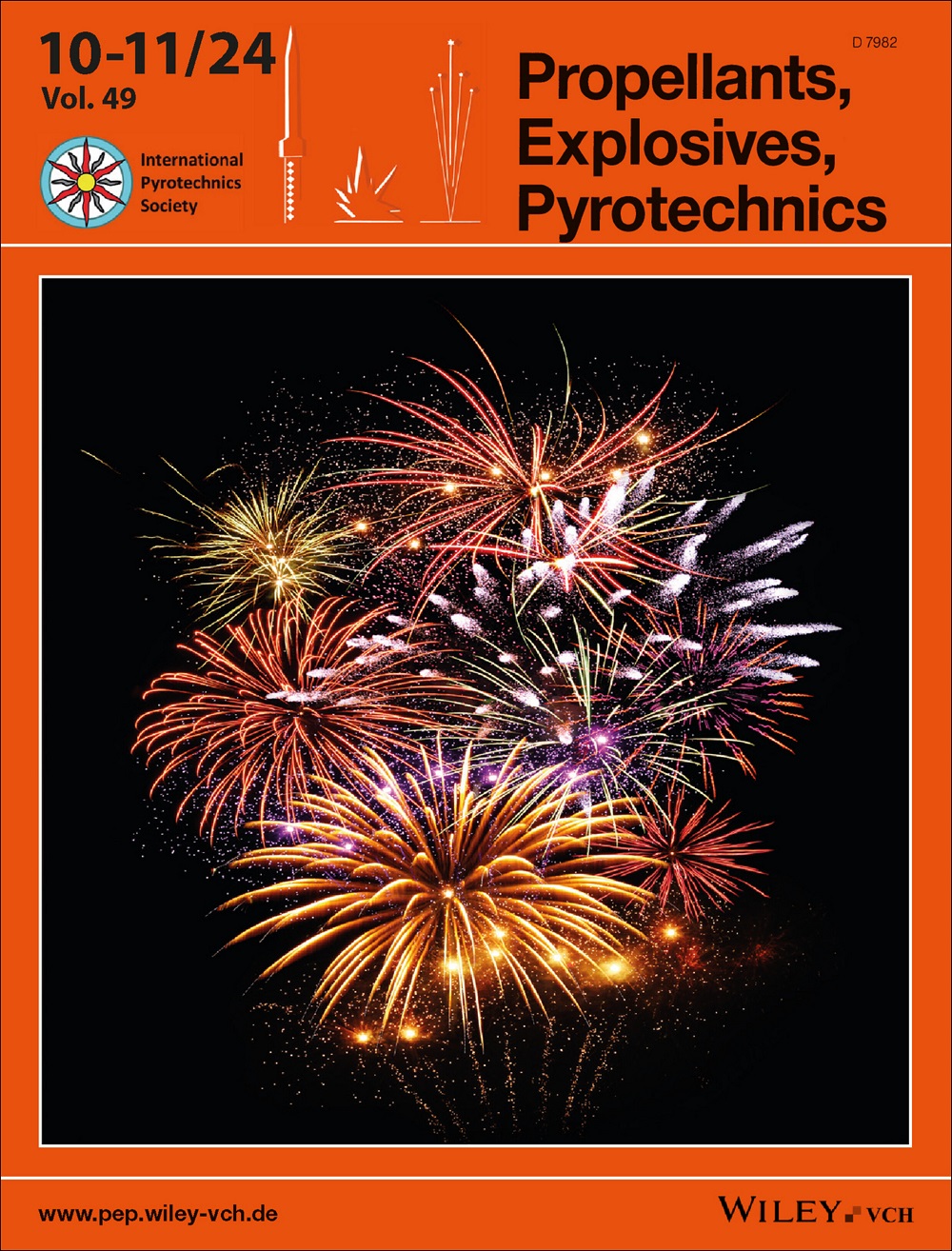Preparation and characteristics of boron‐based composite micro‐units encapsulated by potassium perchlorate
IF 2
4区 工程技术
Q3 CHEMISTRY, APPLIED
引用次数: 0
Abstract
To improve the ignition and combustion performance of boron (B), the B@ potassium perchlorate (KP) composite micro‐units are successfully prepared by recrystallization of solvent evaporation. The morphology and structural composition show that B@KP composite micro‐units are formed by the gentle recrystallization of KP at the heterogeneous interface between B particles and solvents. It is shown by thermal analysis that the initial thermal decomposition temperature of KP is reduced by 49 °C due to the reduction of particle size. In addition, the heat of 420 J/g released by the thermal decomposition of KP is beneficial to the evaporation of the oxide boron (B高氯酸钾包裹的硼基复合微单元的制备及其特性
为改善硼(B)的点火和燃烧性能,通过溶剂蒸发重结晶成功制备了 B@ 高氯酸钾(KP)复合微单元。形态和结构组成表明,B@KP 复合微单元是由 KP 在 B 颗粒与溶剂的异质界面上温和重结晶形成的。热分析表明,由于粒径的减小,KP 的初始热分解温度降低了 49 ℃。此外,KP 热分解释放的 420 J/g 热量有利于 B 表面氧化硼(B2O3)膜的蒸发,从而使 B 的初始氧化温度降低了 185 ℃,改善了 B 的点火性能。有趣的是,KP 受热分解释放出的氧气(O2)迅速与 B 发生反应,释放出 3608 J/g 的热量,从而改善了 B 的燃烧性能。B 与 KP 的最佳质量比为 1:5,这使得点火延迟时间为 641 毫秒,与物理混合样品相比缩短了 19 毫秒。其他样品的点火延迟时间分别为 724 毫秒、680 毫秒和 650 毫秒,B 无法成功点火。在燃烧过程中,所有样品都发出了明亮的绿色 B 燃烧火焰,甚至出现了像蘑菇云一样的猛烈燃烧火焰。总之,B@KP 复合微单元在固体推进剂中具有很大的应用潜力。
本文章由计算机程序翻译,如有差异,请以英文原文为准。
求助全文
约1分钟内获得全文
求助全文
来源期刊

Propellants, Explosives, Pyrotechnics
工程技术-工程:化工
CiteScore
4.20
自引率
16.70%
发文量
235
审稿时长
2.7 months
期刊介绍:
Propellants, Explosives, Pyrotechnics (PEP) is an international, peer-reviewed journal containing Full Papers, Short Communications, critical Reviews, as well as details of forthcoming meetings and book reviews concerned with the research, development and production in relation to propellants, explosives, and pyrotechnics for all applications. Being the official journal of the International Pyrotechnics Society, PEP is a vital medium and the state-of-the-art forum for the exchange of science and technology in energetic materials. PEP is published 12 times a year.
PEP is devoted to advancing the science, technology and engineering elements in the storage and manipulation of chemical energy, specifically in propellants, explosives and pyrotechnics. Articles should provide scientific context, articulate impact, and be generally applicable to the energetic materials and wider scientific community. PEP is not a defense journal and does not feature the weaponization of materials and related systems or include information that would aid in the development or utilization of improvised explosive systems, e.g., synthesis routes to terrorist explosives.
文献相关原料
公司名称
产品信息
阿拉丁
potassium perchlorate
 求助内容:
求助内容: 应助结果提醒方式:
应助结果提醒方式:


